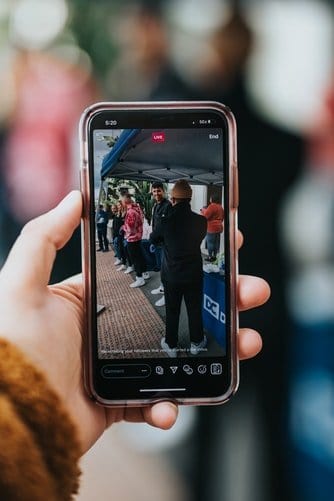The year 2024 is over, but we’ve seen some of the most useful digital marketing trends that changed the online competitive landscape.
The year 2025 is the dawn of new digital marketing trends to explore. It’s well underway, and now is the perfect time to implement a strategy that captures trends with the right fit.
Here are what’s in and what’s out.
How important is it to follow digital marketing trends?
While some are passing and others are ongoing, only when we look back to the previous digital marketing trends that we realize how drastic the changes are.
Another important lesson to learn from this is that if we want to continue getting the desired results, we need to look ahead. There is no such thing as living in the past in digital marketing.
What people need is to gauge the future direction of digital marketing and work alongside it. That’s regardless of how disruptive the digital world and the trends may get.
It all boils down to human engagement, although there are other worth-noting benefits of keeping abreast with the latest trends as follows.
- Cost-effectiveness of the process whether the business is a startup or already established.
- Builds a way to connect with the customers while also establishing brand trust and loyalty.
- Retains and supports a good brand reputation.
- Allows getting ahead of the competition.
- Boosts conversions and, thus, profitability and returns on investment (ROI).
- Allows exact tracking of digital efforts across channels and efforts
How do you keep up with digital marketing trends?
Keeping up with digital marketing trends is easy. There are several means to do so.
Interestingly, how you can keep yourself informed of these trends is through the ongoing trends that you will learn more about below. These are:
- Google search
- Google alerts
- Newsletters
- Blogs and tech news sites
- Networks inside and outside the industry
- Seminars and conferences
- Competitors
You’d want to maintain an efficient digital marketing strategy by learning what trends are working now and what will work in the future.
What are the latest digital marketing trends today?
Below are the biggest digital marketing trends of 2025.
What’s in
Diversified search
Diversified search refers to the trend wherein the users utilize various channels and platforms in doing their search. In addition to a Google search, individuals are using voice and image when searching for more information online.
This means that content producers must analyze how they optimize and deliver the pieces of content for optimal reach. The target is not just the human readers and crawlers but also those who use voice assistants and smart speakers. The content should be available in various formats as well including textual and video content, for instance.
The bottom-line of reaching prospective consumers means being aware of the various ways they utilize to find your business or brand.

Machine learning
Machine learning (ML) is tied to artificial intelligence (AI). ML is a digital marketing trend that utilizes big data such as customer behaviors and preferences.
Advertising platforms also rely on ML in optimizing bids so that the brand or company may get the most value from every conversion spent.
As such, ML is becoming more sophisticated, and so are its capabilities of handling more complex tasks and requests.
AR enhancement
Like virtual reality (VR), augmented reality (AR) is one digital marketing trend that offers opportunities to improve the online shopping experience.
AR enhancements create immersive experiences through visuals, reshaping the digital world, especially the retail market. Improved consumer engagement and satisfaction are the likely outcomes of using these features.
The AR market is also expected to reach a market size of $209 billion by 2022.

Conversational commerce
Online retail is still very mechanical. However, interactions are no longer limited to going online, searching for a product, and ordering it.
With conversational commerce, interactions are made readily available to consumers. The goal of this digital marketing trend is to create a supportive environment where the buyers may easily complete the tasks.
There are no store assistants, but there are smart chatbots that can guide the buyer throughout the process. Consumers may also receive notifications through chat apps such as Messenger.
All these contribute to a better online shopping experience.
Live video
Using live video is a continuing digital marketing trend. Thanks to smartphones with recording and playback capabilities, these paved the way for shooting live videos.
This content is technically cheap to create. Mostly, the videos are as-is with no edits required. After all, the users are after the content and not just the astounding production values.
The honesty, realness, and vibrance of live videos are more than enough to assist the brand in accomplishing its goal to engage the target audience.

Humanizing brands
More than displaying the brand’s corporate social responsibility (CSR) activities, the significance still lies in humanizing the brands.
The consumers have environmental, political, and social justice concerns that some brands advocate for. Indeed, the trend is businesses being transparent more than ever by opening up about their internal processes and practices.
Brands that fail to operationalize this trend become a victim of a social media firestorm. No brand wants that to happen, of course.
This does not mean that brands should be perfect. Instead, integrating humanity to operations means admitting its flaws and correcting them most efficiently.
Social advertising
Paid search optimization, or pay-per-click (PPC), is just one option. The problem with this is it can be too competitive. And so the businesses are turning to social advertising as a complementary tactic, making it a worthwhile digital marketing trend to pursue.
There is a unique aspect to social media advertising, and that’s reaching the target audience when they are most engaged. The targeting capabilities, therefore, are data-driven.
Social ads are also not your typical banner-like advertisements. They usually matched with the platform’s parameters, getting ultra granular with targeting.
In Facebook, for instance, the ads are more content-driven. On Instagram, Pinterest, and Snapchat, on the other hand, the ads are more freeform. They are able to reach massive and hyper-relevant follower bases.

Micro-moments
Google defines micro-moment as a new type of consumer behavior. These are instances when a consumer acts on his or her need.
Based on such a need, micro-moments are created in terms of knowing, going, doing, and buying moments. Consumers explore but are not necessarily interested in purchasing anything. Next, they look for a brand or business with the intention to buy. Then, consumers intend to learn to complete a task. Finally, they search for a product or service with the intent to make a purchase.
This trend means guiding the consumers throughout the buyer’s journey, creating moments that will push them down the sales funnel. Understanding the concept can lead to higher conversion rates this 2025.
Futuristic SEO
SEO is more innovative than ever. As such, futuristic SEO is the way to go. It is thus about media creation to satisfy media search.
There are two ways to do this undertaking. First, search engine is getting more sophisticated. It can accommodate queries beyond text search. Second, the users are also modifying their search queries. We are now using voice, image, and audio when searching for something.
While content can still be considered the basis of ranking, relevance is all the more crucial.
Voice search
Voice search is the fastest-growing digital marketing trend of 2019 that will be carried on through 2025, 2026, and beyond
A Voice Search Local Business Study of 2018 revealed that 58% of the consumers in the US used the voice search features in finding information in the last 12 months before the study was commissioned. About 53% of them use a smart speaker every day, and 76% of them perform local searches every week.
Aside from this, voice assistants have improved considerably. More and more people use them every day for basic activities like hailing cabs, ordering food, locating a shop, learning schedules, etc.
Websites and social pages, therefore, must be more mindful of the content they published. These pieces of content should be voice-powered to boost local SEO, among others.
Sentiment analysis
Sentiment analysis is also an ongoing digital marketing trend whereby AI relies on the subtleties of human communication and interaction.
The simplest basis of the analysis is whether the post or update is positive, negative, or neutral. Nevertheless, AI tools can also tag the post as assertive, satirical, ironic, etc.
Results of sentiment analysis guide brands and businesses to control and protect their reputation as well as the consumers’ attitude towards their products and services. Through this, the brand is able to attract more consumers to transact with them.
What’s out
Prioritizing desktop
Digital marketers can no longer afford to ignore mobile device usage, which is continually rising.
With this said, the desktop no longer dominates. Mobile search is the prioritized device now considering that people are now increasingly mobile themselves.
They use mobile devices complementary to using voice search, image search, and even contextual search. Contextual search refers to using the element on a page that you want to research more.

Implementing content hubs
The practice was called content mills before it became content hubs. Whatever it is, the process involves producing several pages that feature keywords and not necessarily valuable content.
Thoughtful content, or content that resonates with the needs of the users, is what’s needed in 2025, 2026, and beyond. The content hub model is frowned upon by legit content producers. As such, piecemeal content is so 2015.
Also, Google is currently on the lookout for these websites through Panda algorithm updates. Panda was launched in 2011.
Websites are now compelled to produce comprehensive and high-level topics that are not keyword-oriented and with relevant internal links.



